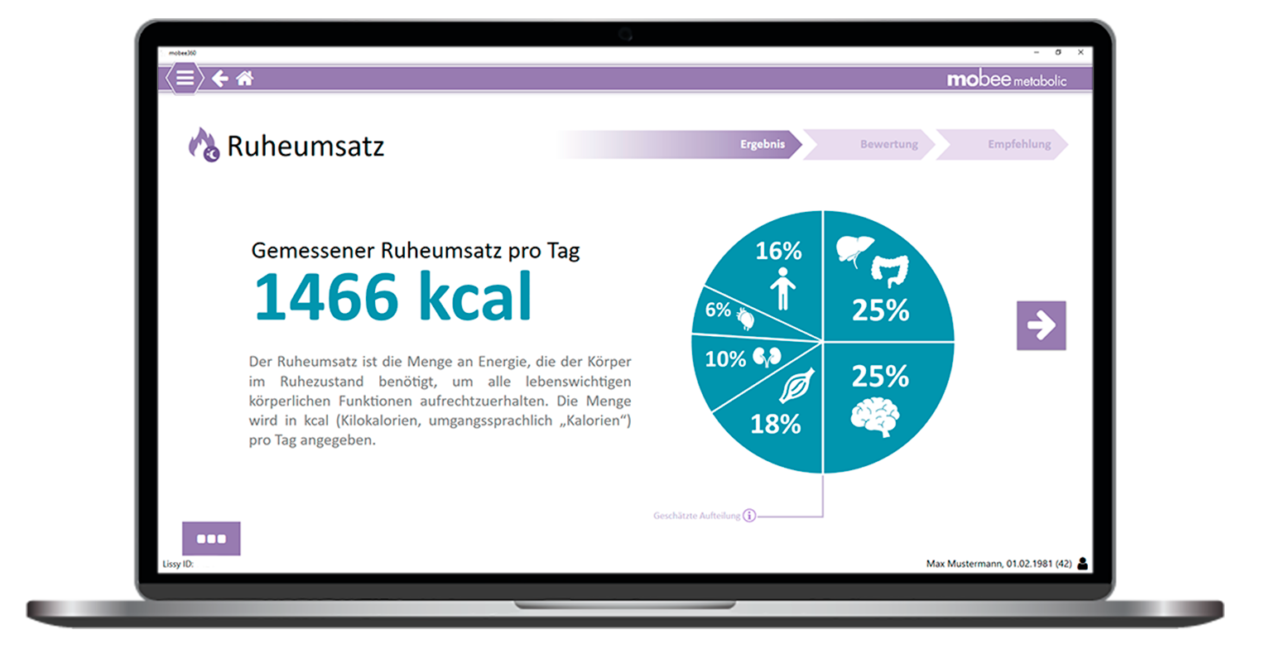The human organism, like every other living being, needs energy and nutrients in order to function. The body receives both through food, which is broken down and made available in the digestive tract.

The body meets its energy requirements by oxidising the nutrients carbohydrates, fat and, to some extent, protein. Combustion does not take place suddenly and with the formation of flames, as in an oven, but takes place slowly in many stages.
Energy requirements vary from person to person and from day to day. How much energy a person needs depends on many external and internal influences. The total energy requirement per day is made up of the basal metabolic rate, the power metabolic rate, food-induced thermogenesis and the additional requirement for growth, pregnancy and breastfeeding:
Basal metabolic rate + power metabolic rate + digestive losses + food-induced thermogenesis = total energy requirement
Basal metabolic rate
The basal metabolic rate is also known as the fasting metabolic rate. It corresponds to the amount of energy that a person needs in 24 hours, at complete rest, lying down and at a constant outside temperature of 20 to 28 degrees Celsius, in order to maintain the body's basic functions, such as heartbeat and breathing.
The level of the basal metabolic rate depends, among other things, on age, climate, body temperature, hormones, body weight and height. Muscle mass also plays a decisive role. This is why the basal metabolic rate in men is around 10 per cent higher than in women due to their greater muscle mass.

Basal metabolic rate vs. resting metabolic rate
Resting metabolic rate must be distinguished from basal metabolic rate, although the two terms are often used interchangeably. The resting metabolic rate also indicates the minimum amount of energy a person needs to maintain their bodily functions, but the conditions under which it is measured are less strict than in the basal metabolic rate measurement. The test person sits comfortably and is also lightly clothed. The resting metabolic rate is around 6 to 10 per cent higher than the basal metabolic rate.

The power metabolic rate
Every additional activity that a person performs in addition to the basal metabolic rate consumes more energy. The power metabolic rate reflects the amount of energy required for any kind of physical activity, including the work metabolic rate and the leisure metabolic rate. Exercise, for example, can significantly increase the power metabolic rate.
Digestive losses & thermogenesis
Nutrients supplied with food not only provide energy, but with a normal mixed diet around 10 per cent of the energy consumed is used again for digestion, absorption, transport and storage of the nutrients. This increased energy turnover is associated with increased heat production in the body, which is known as food-induced or postprandial thermogenesis.
Food-induced thermogenesis is defined as the increase in body temperature and the release of heat into the environment above the basal metabolic rate, which occurs around 6 hours after food intake. It depends on the type and quantity of food intake and age.
Sources:
https://www.ernaehrung.de/
https://www.dge.de/
https://www.safs-beta.de/